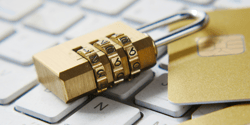Imagine steering a ship through stormy seas without a compass—this is managing a business without effective risk management controls. These essential tools serve as both the first and last lines of defense against potential threats, crucial for mitigating risks and maximizing opportunities.
Understanding what risk control is, its impact, and how it differs from other risk management tools is vital. Implementing the right controls and measuring their effectiveness can significantly enhance your organization's stability and growth.
This article provides comprehensive guidance on identifying, assessing, and managing risks to keep your business on course.
Understanding risk management controls
Effective risk management controls are essential for any business to reduce or manage risks successfully. Companies such as Sumitomo Electric, British Petroleum (BP), and Starbucks have implemented comprehensive control measures to safeguard their operations, highlighting the importance of risk management.
The principles outlined in ISO 31000 are widely employed to manage and mitigate risks within businesses.
Five key questions to define risk control
To provide a comprehensive understanding of risk control, businesses should address five key questions regarding the nature and scope (likelihood and impact) of risks. These questions are designed to assist businesses in gaining a full understanding of risks and their origins. The questions include:
- Identifying the risks that could impact the organization.
- Assessing the likelihood of the risk occurring.
- Evaluating the impact of the risk on operations and finances.
- Reviewing the effectiveness of existing control measures.
- Considering additional measures that could be implemented to minimize identified risks.
These five key questions aid businesses in defining risk control within the context of managing risks across various domains of enterprise risk management, including financial, operational, strategic, and compliance aspects.

This article's just a snippet—get the full information security picture with DataGuard
A digital ISMS is where you begin if you want a bullet-proof setup. It's a base for all your future information security activities.
Risk control definition
Risk control encompasses strategies and measures utilized to prevent loss and manage risk, including monitoring and implementing internal controls and protocols, conducting regular risk assessments, having insurance coverage, and being responsive in emergencies. These measures are combined with other strategies like diversifying investments, implementing cybersecurity measures, and developing contingency plans to safeguard a company against various risks.
Companies that monitor and assess threats continuously can proactively address potential vulnerabilities, taking essential actions to safeguard their assets and reputation. This proactive approach is crucial for maintaining stability in a dynamic and competitive business landscape.
What aspects of risk do controls modify?
Risk management controls modify operational risks and financial policies to reduce their potential negative impacts on the business. Operational risks pertain to internal failures in operational processes that may result in disruptions or inefficiencies within the organization.
Financial risks, on the other hand, involve uncertainties regarding the company's financial viability and stability. Control measures modify these risks by implementing safeguards and procedures intended to prevent, detect, and respond to them.
Operational risk controls encompass establishing protocols, conducting assessments, and providing employee training. Financial risk controls involve implementing budgeting strategies, monitoring cash flows, and ensuring compliance with regulatory requirements.
How controls modify risk
In a business setting, risk is managed by implementing controls that encompass preventive, detective, and reactive measures to mitigate risk before, during, and after it materializes.
Preventive controls are proactive actions taken to avert risks from materializing. For instance, regularly updating antivirus software on company computers serves as a preventive control against cyber threats.
Detective controls are mechanisms designed to identify risks as they unfold. For example, utilizing firewalls to detect unauthorized access attempts serves as a detective control.
Reactive controls come into play after the risk has manifested. For example, conducting a post-mortem analysis to pinpoint vulnerabilities following a security breach is a reactive control.
Collectively, these controls establish a layered defence, diminish vulnerabilities, and enhance overall risk management.

Secure your success.
Subscribe for actionable expert advice!
Join 3,000+ business leaders who stay ahead of the curve with our monthly information security newsletter.
Understanding measures in risk management
Measures in risk management are typically organized within a Risk and Control Matrix (RACM), which enables the systematic identification and evaluation of control measures. The matrix is essential in assisting businesses in recognizing potential risks, assessing the efficiency of current controls, and pinpointing any deficiencies that require attention.
RACM offers a structured framework for conducting risk assessment, enabling organizations to prioritize control measures based on the level of risk they present. Additionally, RACM serves as a visual aid that enhances communication and comprehension among various departments, fostering a more cohesive approach to risk management within the organization.
Differentiating controls from other risk management tools
Risk controls are a specific type of risk management tool designed to modify risk profiles by implementing targeted control actions. Unlike other risk management tools, such as risk assessments that evaluate the likelihood and impact of risks, risk controls focus on actively intervening in risk factors that could impact an organization's operations or objectives.
The goal of risk controls is to develop strategies to either decrease the likelihood of risks occurring or minimize their potential impact. By utilizing risk avoidance, risk transfer, or risk mitigation tools, organizations can effectively manage and reduce risks.
Main types of risk management controls
Preventive, detective, and reactive controls are the main types of risk management controls, each serving a distinct role in managing risks. Preventive controls are measures implemented to avoid risks proactively. These include policies, procedures, training, and security measures designed to lower the likelihood of identified risks.
Detective controls aim to uncover risks that have already transpired or are currently unfolding. These encompass audits, surveillance systems, and regular monitoring.
Reactive controls are devised to address risks after they occur, with the objective of mitigating negative outcomes and preventing their recurrence. An effective risk management strategy will integrate all three types of controls.
Recording controls in a risk and control register
Incorporating recording controls into a Risk and Control Register enables the systematic recording and management of control implementation within an entity. This process involves identifying key controls that address risks, assigning accountability for their implementation, setting deadlines for completion, and continuously monitoring their effectiveness.
Maintaining a comprehensive register enhances transparency, accountability, and governance across various functions within entities. The Risk and Control Register serves as the central repository for all control-related data, which can be used to identify control gaps and formulate corrective plans.
This detailed documentation also supports auditors, regulators, and senior management in assessing the effectiveness of risk management processes and ensuring regulatory compliance.
Implementing risk management controls
Utilizing risk management controls is a strategic approach to identifying and mitigating emerging risks, particularly in critical areas such as the supply chain, following the guidelines outlined in ISO 31000.
Identifying expected and targeted risks
The first of the four key components in risk management is identifying expected and targeted risks. This involves conducting detailed risk assessments that are crucial for pinpointing potential risks. These assessments entail collecting and analyzing data related to the parameters associated with the project, business, or the organization's situation.
By systematically evaluating potential hazards and vulnerabilities, organizations can anticipate them and devise appropriate strategies to reduce the likelihood of those risks materializing.
This step is crucial in risk control as it aids in designing strategies to minimize or eradicate the identified risks. Knowledge of the specific risks empowers decision-makers to make informed decisions, mitigate the adverse effects of those risks, and capitalize on opportunities for growth and profit.
Utilizing risk and control self-assessment in risk management
Risk and Control Self-Assessment (RCSA) is a fundamental component of risk management that utilizes the Risk and Control Matrix (RACM) to evaluate and enhance the effectiveness of control activities. Through RCSA, organizations gain valuable insights into their processes, identifying potential risks and control weaknesses.
The RACM model is utilized to align control activities with risk scenarios identified during the control assessment process, facilitating a structured approach to risk mitigation.
Self-assessment fosters a higher level of individual and team engagement in the risk management process, with individuals taking a proactive role in identifying areas for improvement. This active involvement not only enhances the efficiency of controls but also promotes a culture of continuous improvement.
Self-assessment increases transparency and accountability, as stakeholders are directly involved in identifying and reinforcing controls.
Learning from root cause analysis in risk management
Root cause analysis is a crucial component of risk management, enabling businesses to identify the fundamental factors contributing to operational risks. By examining and pinpointing the root causes of incidents or potential risks, organizations can create more effective risk controls that target underlying issues rather than surface-level symptoms.
For instance, if a company is repeatedly encountering equipment failures, a root cause analysis may reveal that this is a result of inadequate equipment maintenance or insufficient staff training. By recognizing and remedying these root causes, the company can implement risk controls that focus on enhancing maintenance procedures or introducing staff training initiatives, ultimately reducing the probability of equipment failures and related risks.
This article's just a snippet—get the full information security picture with DataGuard
A digital ISMS is where you begin if you want a bullet-proof setup. It's a base for all your future information security activities.
Frequently Asked Questions
What are controls in risk management?
Controls in risk management refer to measures put in place to minimize or eliminate potential risks and ensure the safety and security of an organization.
Why are controls important in risk management?
Controls are important in risk management because they help to identify, assess, and mitigate potential risks, ultimately reducing the likelihood and impact of negative events on an organization.
What types of controls are used in risk management?
There are various types of controls used in risk management, including preventive controls, detective controls, corrective controls, and compensating controls. These controls can be physical, technical, or administrative in nature.
How are controls implemented in risk management?
Controls are typically implemented by conducting risk assessments to identify potential risks, developing a risk management plan, and then implementing and monitoring the selected controls to ensure their effectiveness.
Who is responsible for implementing controls in risk management?
The responsibility for implementing controls in risk management falls on the organization's risk management team, including risk managers, compliance officers, and other stakeholders. It is also important for all employees to be aware of and adhere to the controls put in place.
What is the role of controls in compliance and regulatory requirements?
Controls play a crucial role in compliance and meeting regulatory requirements. By implementing controls, organizations can demonstrate their commitment to managing and mitigating risks in accordance with industry standards and regulations.












